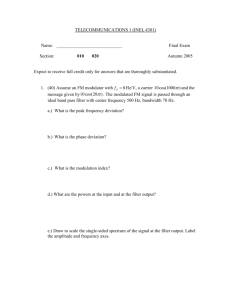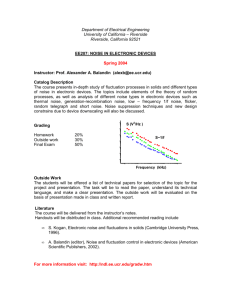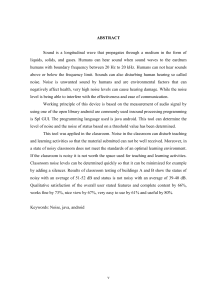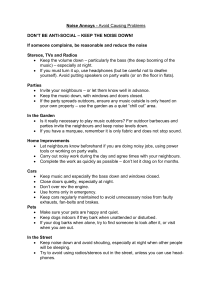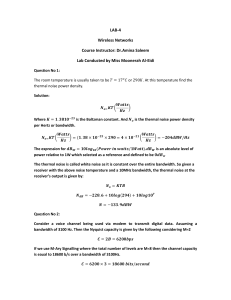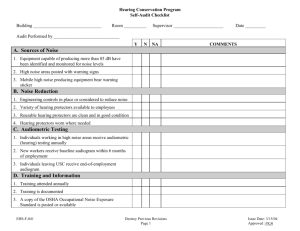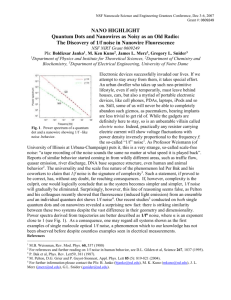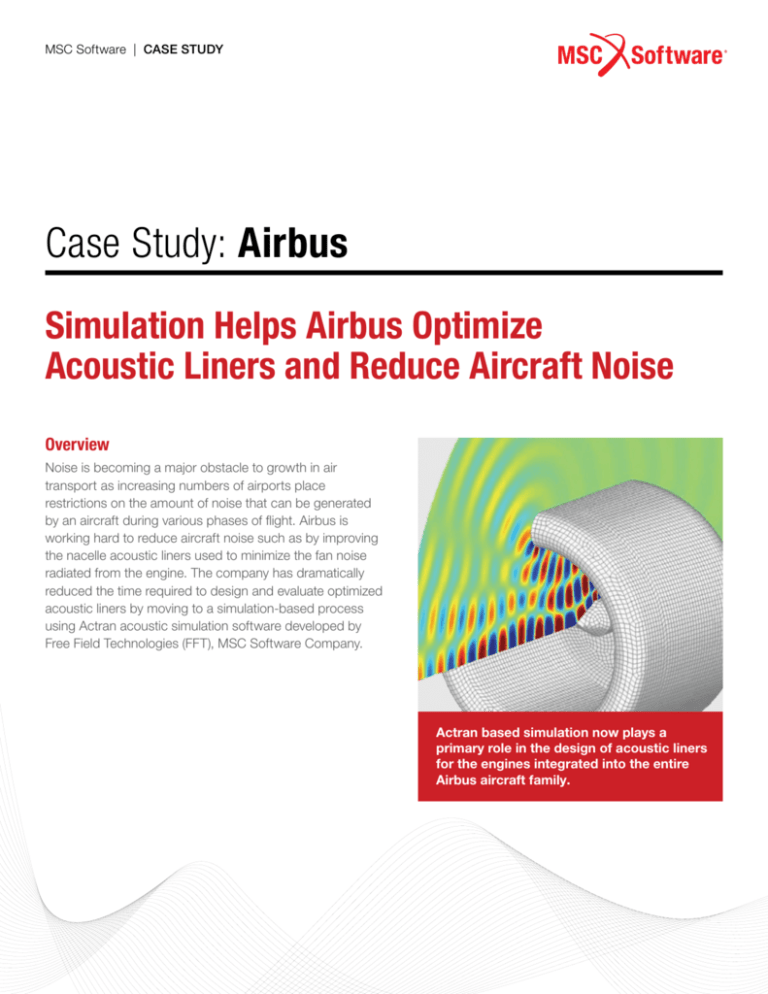
MSC Software | CASE STUDY
Case Study: Airbus
Simulation Helps Airbus Optimize
Acoustic Liners and Reduce Aircraft Noise
Overview
Noise is becoming a major obstacle to growth in air
transport as increasing numbers of airports place
restrictions on the amount of noise that can be generated
by an aircraft during various phases of flight. Airbus is
working hard to reduce aircraft noise such as by improving
the nacelle acoustic liners used to minimize the fan noise
radiated from the engine. The company has dramatically
reduced the time required to design and evaluate optimized
acoustic liners by moving to a simulation-based process
using Actran acoustic simulation software developed by
Free Field Technologies (FFT), MSC Software Company.
Actran based simulation now plays a
primary role in the design of acoustic liners
for the engines integrated into the entire
Airbus aircraft family.
“Airbus has confirmed the accuracy of Actran predictions by comparing them with
engine static testing results. Actran is the only simulation tool able to accurately
model the main physical phenomena for engine nacelle radiation.”
Jean-Yves Suratteau, Head of Numerical Methods, Acoustics & Environment Dept., Airbus
Challenge
Importance of Reducing Aircraft Noise
Aviation noise is one of the most serious
constraints on expansion and improvement of
the air transport system throughout the world.
Increases in air traffic and population growth
in areas surrounding airports are increasing
the impact of aircraft noise on the community.
Airports around the world have taken
measures to address aircraft noise including
the establishment of noise budgets and noise
charges to limit cumulative noise exposure
and curfews, operating quotas and noise limits
to reduce nighttime noise. Turbofan engine
fan noise is one of the largest contributors
along with jet noise to noise radiated by an
aircraft at take-off. The fan pulls air into the
front of the engine and generates noise at the
inlet of the fan similar to the noise caused by
a propeller. The air is swirling as it exits the
fan which causes a loss of momentum so the
air is straightened out by running it through
a set of stationary vanes called the stators
at the fan outlet. The impact of the air on the
stator blades is another major source of noise.
The acoustic liners that are built into the
engine nacelle are fundamental in controlling
fan noise. Acoustic liners present a major
design challenge because they must
address a large number of conflicting design
requirements. Liners must provide high levels
of noise reduction over a wide range of engine
operating conditions and frequencies. Liners
must also meet tight space restrictions and
need to be as light as possible in order to
limit fuel consumption. The liner is typically
designed at a point when aspects of the
airframe and engine are not completely
defined so the liner design must be flexible
enough to adapt to changes. The liner must
be able to survive exposure to heat, cold,
water, oil, and maintenance operations.
Finally, the liner must be durable enough
to deliver decades of service in the highly
demanding aircraft engine environment.
radiated noise with an array of microphones.
This approach was very expensive and
design evaluation could not be initiated until a
prototype engine was available for testing. To
address this challenge, Airbus engineers used
analytical tools that predicted noise radiation
but these tools were only accurate when
used with very simple geometries so their
usefulness in modeling noise radiation from
the nacelle was limited. Airbus has long been
working to more accurately simulate noise
radiation from the nacelle. “When FFT created
the Actran consortium in 1999, the Acoustic
Department of Airbus-France decided to be
part of it and to support the development
of the first version of Actran software.
We are currently using it for design of nacelle
liners in engine inlets and exhaust ducts,
cockpit and cabin interior noise, air systems
at ground, propellers and contra-rotating
propellers,” Suratteau said. “Airbus has
confirmed the accuracy of Actran predictions
by comparing them with engine static testing
results. Actran is the only simulation tool
able to accurately model the main physical
phenomena for engine nacelle radiation.”
The numerical process is presented in Fig.1.
The shape or wetted surface of the nacelle is
defined by the aerospace engineers based on
aerodynamic requirements and is provided to
Solution
Improving Acoustic Liner Design
Originally, the design of acoustic liners was
based on static tests performed by running
the engine on a test rig and measuring the
Figure 1: ANaNax streamlines acoustic simulation
Key Highlights:
Product: Actran
Industry: Aerospace
Benefits:
•Reduce product development
costs by avoiding expensive
post-design changes.
•Reduce test/analysis iterations
•Improve performance predictions
acoustic engineers as a CATIA V5 computer
aided design (CAD) file. Engineers generate
a finite element mesh of the nacelle liner
geometry using hexahedral and tetrahedral
elements and use a visualization tool to
check the quality of the mesh. The model is
based on a partitioned approach in which the
inner acoustic domain is modeled with finite
elements and the outer acoustic domain which
extends to infinity is modeled using infinite
elements. The acoustic source at the source
plane is defined in terms of a modal boundary condition where the incident acoustic field
is defined in terms of rigid-wall duct modes.
The airflow inside and outside the engine
has a major impact on acoustic radiation.
A preliminary and important step is to get
computational fluid dynamics (CFD) results
from the aerodynamic engineers from
Airbus. Engineers then use interpolated
CFD temperature, velocity and pressure
data with the acoustic simulation. Another
input data for acoustic simulation is the
noise at fan level which is given by the
engine manufacturers in the form of a modal
decomposition, obtained through engine
static test results. A typical nacelle liner is
composed of a sandwich constructed from
a rigid backplate, honeycomb cells and
a perforated facesheet (Single Degree of
Freedom, SDOF). The design parameters
that typically can be changed to optimize
the liner design include the thickness of
the liner, the spacing and diameter of holes
in the face sheet, the number of blocks of
material from which the liner is constructed
and several others. The acoustic simulation
results are provided in the form of sound
pressure levels at various points around
the nacelle as they would be measured by
an array of microphones. The results can
easily be correlated with static tests. Airbus
has developed an in-house program that
converts the results to effective perceived
noise in decibels (EPNdB), the basic
measurement for noise certification criteria.
Liners are typically manufactured in two or
three curved segments that are assembled
with longitudinal splices. Simulation with
Actran and other numerical tools helped to
reveal the substantial impact of splices on
forward fan noise and these simulations
were confirmed with physical testing.
These simulations made it possible to
compute the radiated noise fields under all
relevant engine operating conditions and
predict the noise reduction in certification
conditions. The design of the zero-splice
concept, through numerical simulation,
made it possible to significantly reduce the
fan noise and the acoustic discomfort.
Airbus developed an integrated numerical
chain for Actran in order to streamline its use
by acoustics engineers who are not numerical
experts. The chain, called Automated Liner
Optimization Chain for Nacelles Air Inlets
and Exhausts (ANaNax), automates the
simulation process from engine geometry to
Actran results including prompting the user
for all required information and performing
“Since its entry into service in 2011, ANaNax
has been used for 6 nacelle optimization
studies in 2011 and 8 studies in 2012 and
is now the standard platform for nacelle
design at Airbus,” Suratteau concluded.
“Actran has helped Airbus design and
deliver best-in-class acoustic solutions that
save aircraft weight with a huge financial
impact for airlines operating Airbus aircraft.
Actran also helps Airbus reduce product
development costs by avoiding expensive
post-design changes. Having proven the
value of Actran for nacelle liner design, Airbus
is now in the process of expanding its use
by developing new applications such as
auxiliary power units (APUs) and ground
systems for ramp noise and counter-rotating
open rotor (CROR) engines for community,
cockpit and cabin interior noise.
Figure 4: Flow in fan computed with CFD
Figure 5: Diagram of noise sources in turbofan engine
Results/Benefits
Avoiding Expensive Post-Design Changes
Figure 2: Actran acoustic mesh of fan intake
Figure 3: Actran prediction of fan inlet noise
validation checks on the data entered by
users. “A typical optimization loop for the
nacelle liner requires evaluation of 80 liner
iterations and three flight conditions at a
frequency range from 125 Hz to 5650 Hz
which means we need to simulate several
thousand different cases,” Suratteau said.
“Robustness and accuracy of the simulations
is critical so realistic 3D shapes, flows and
boundary conditions are a must. ANaNax
greatly reduces the time required for nonanalytical experts to perform simulations and
to check their work to be sure inputs are
realistic. Computation time has also been
drastically decreased by the implementation
of a high performance computing (HPC)
platform based on Westmere X5670
Infiniband technology with 5312 cores
combined with the high scalability of Actran.”
For more information on Actran and for additional Case Studies, please visit www.mscsoftware.com/actran
Corporate
MSC Software Corporation
4675 MacArthur Court
Suite 900
Newport Beach, CA 92660
Telephone 714.540.8900
www.mscsoftware.com
Europe, Middle East,
Africa
MSC Software GmbH
Am Moosfeld 13
81829 Munich, Germany
Telephone 49.89.431.98.70
Japan
MSC Software LTD.
Shinjuku First West 8F
23-7 Nishi Shinjuku
1-Chome, Shinjuku-Ku
Tokyo, Japan 160-0023
Telephone 81.3.6911.1200
Asia-Pacific
MSC Software (S) Pte. Ltd.
100 Beach Road
#16-05 Shaw Towers
Singapore 189702
Telephone 65.6272.0082
The MSC Software corporate logo, MSC, and the names of the
MSC Software products and services referenced herein are trademarks
or registered trademarks of the MSC.Software Corporation in the United
States and/or other countries. All other trademarks belong to their
respective owners. © 2014 MSC.Software Corporation. All rights reserved.
AIRBUS*2014MAY*CS

